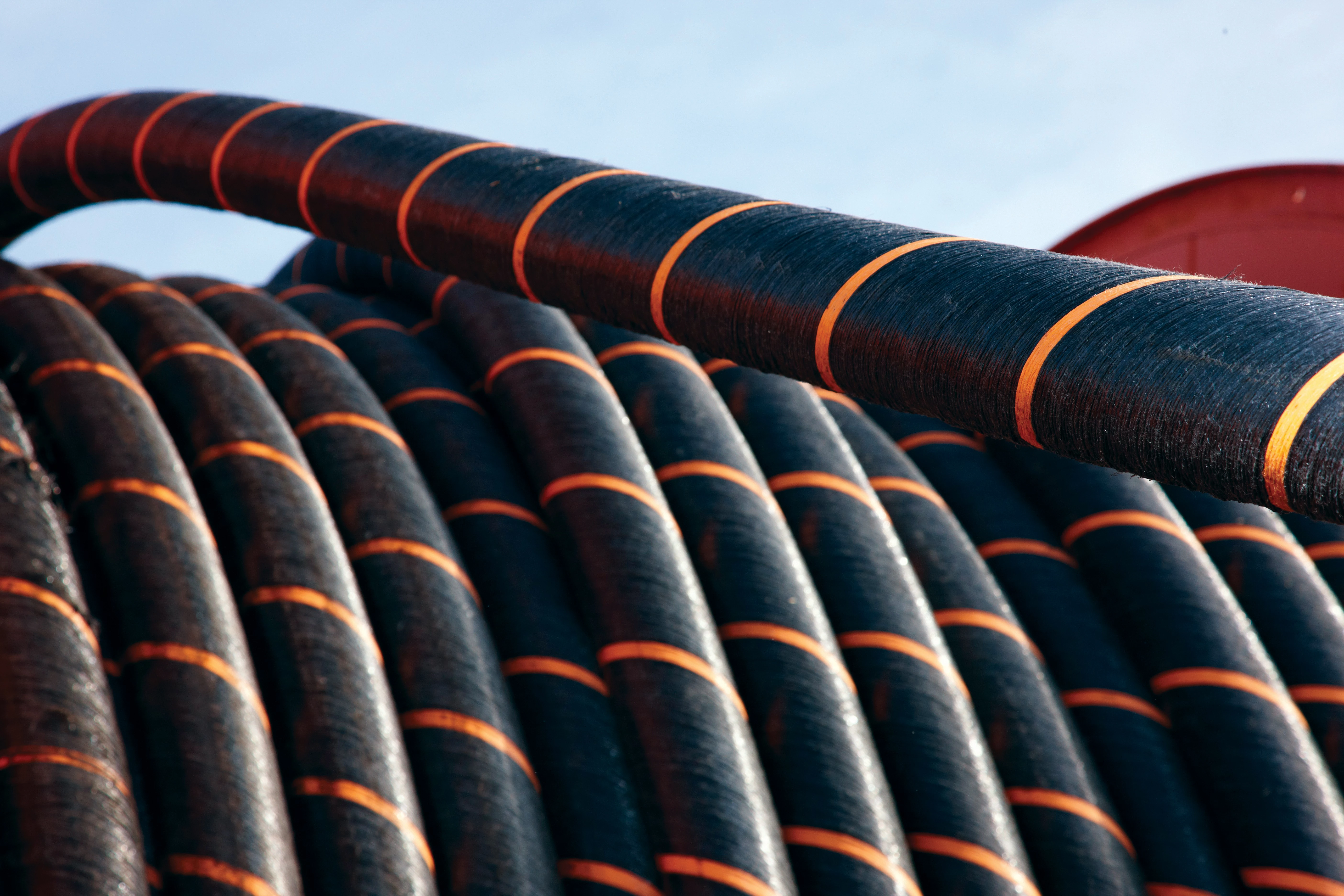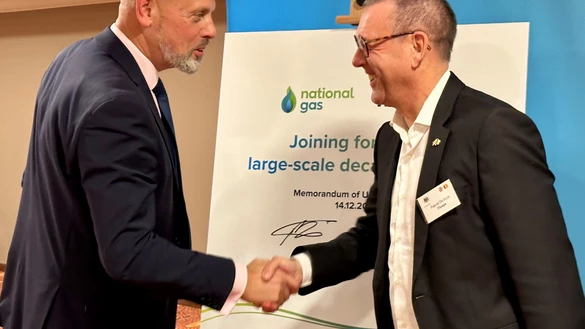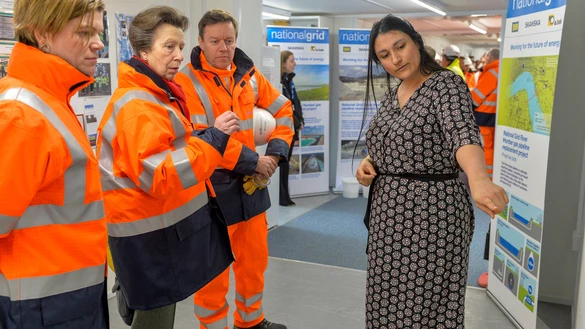- Back
- Balancing
- Capacity
- Charging
- Connections
- Data and operations
- Land and assets
-
Insight and innovation
- Back
- Home
- Insight and innovation
- Transmission innovation
- Summer Outlook
- Winter Outlook
- Gas Ten Year Statement (GTYS)
- Gas Future Operability Planning (GFOP)
- The future of gas-fired generation
- Understanding within-day behaviour
- Identifying future drivers of change
- Changing supply patterns
- Future of gas
- Stakeholder resources

40th anniversary check for St Fergus
After 40 years of sterling service under some of the country’s toughest weather conditions, St Fergus Gas Terminal on the north-east coast of Scotland was due a major overhaul. But the scale of the project required a whole new way of thinking in order to keep the gas flowing.
Up to half of the gas we use in Great Britain flows initially through the St Fergus gas terminal, which was built in 1976 on the north-east coast of Scotland.
Situated 60km north of Aberdeen, the terminal takes gas from a number of northern North Sea gas fields, compresses it and feeds it into the National Transmission System (NTS). Gas is then conveyed to gas-fired power stations, large industrial plants and local distribution systems for generating heating and hot water in the nation’s homes.
The St Fergus site comprises a network of compressors, pressure vessels, pipes and valves that compress and control the flow of gas. Much of the pipework is buried underground, but some of it has to be accessible above ground for operations and maintenance, leaving it at the mercy of the Scottish weather.
Compressor Strategy Manager Jeremy Hunns was responsible at the time for the site operations team at St Fergus in his previous role as Area Operations Manager for Scotland. He believes that major rework was vital even though the site had been well-maintained:
“When the site was first built, it was designed to last for around 40 years,” he said. “But we had to bring the site up to scratch and ensure its safe operation for the next 40 years.”
Asset health campaign
An ‘asset health’ campaign was kicked off in 2015 by National Grid’s Capital Delivery team with an estimated spend of more than £50m to cover a three-year project. The campaign is geared around keeping National Grid assets in good shape so they continue to function effectively.
With St Fergus so important to Great Britain’s gas supply, Project Manager Graeme Liddell’s team worked very closely with site operations at St Fergus to allow them to continue their critical routine work.
“A project of this size presents a challenge simply because there’s so much more activity to take into account when planning how to continue our routine operations safely,” said Graeme.
This task was made even more difficult last summer because work on other parts of the European gas network meant significantly more gas than usual had to be directed through St Fergus.
The challenge was to keep enough compressors available to handle the volume of gas the different gas shippers wanted to flow through the terminal each day.
Bold decision
The St Fergus terminal was originally equipped with eight gas turbine-powered compressors arranged in two plants (Plants 1 and 2), although one of the original compressors has subsequently been decommissioned. Extensive and urgent remedial work was needed on both Plants 1 and 2, and elsewhere across the site. The project and operations teams jointly agreed a bold plan to completely shut down and isolate the two plants in turn so that the project team could work uninterrupted. This had never been done before in the life of the terminal.
Plant 2 was chosen as the first area of the site to undergo remedial works during 2016. Similar work on Plant 1 is scheduled for 2017. The shutdown option was only made possible by the commissioning of two new electrically-driven gas compressors in a separate area of the site in 2015. These new compressors will eventually replace some of the gas turbine-driven compressors. In the meantime, the extra capacity they provide gives the site operators more flexibility to work round the gas compressors being offline.
We would only have managed about 10% of what we’ve achieved if we’d gone down a more conventional route. It’s been a huge challenge but everyone from the project team and regular teams on site has risen to it.
- Jeremy Hunns, Compressor Strategy Manager
Thinking differently
The project team had expected to see some corrosion on the pipework and valves, given that the terminal is right on the coast and exposed to the elements. Although the site was operating safely, there was still a significant amount of corrosion to deal with, which left them with a long list of tasks to complete.
The Main Works Contractor for the project, Fastflow, carried out most of the work, directed by the project team, with specialist sub-contractors brought in as required.
As well as acting differently in planning the works, the project team realised they would need to think of different, innovative ways to find and deal with the corroded metalwork.
One example of this was the inspection of ‘pit wall transitions’, where the team used the latest cutting technology to speed up the process. Some below-ground valves and associated pipework are located in concrete-lined pits so they can be easily operated and maintained. Where the pipes go back underground they pass through the reinforced concrete wall of the pit through what is known as a ‘pit wall transition’.
Despite experimenting with a variety of different inspection techniques, it has not been possible to check for corrosion in these areas without cutting away all of the concrete and associated reinforcing bar from around the pipe. In the past, this was done using pneumatic drills and cutting gear, a painstaking and time-consuming operation.
As an alternative, the project team brought in ‘hydrodemolition’ specialists, who used high-pressure jets of water to cut through the concrete and the reinforcing bar. The process is quicker, easier to control and more accurate than drilling. There’s also no vibration, meaning less impact on the pipes and the operators.
Money and time were also saved when repairing corroded small-bore vent and sealant lines on buried valves. The standard approach is to dig down and expose the whole valve (often buried several metres underground) before replacing the whole vent or sealant line. However, following a number of trial excavations and inspection of the vent and sealant lines, the team discovered that corrosion was limited to the ‘wind and water’ line where the lines break the surface of the ground. Armed with this information, the team developed and adopted a ‘shallow dig’ policy. This allowed the partial replacement of the vent or sealant line from a point just below the corroded section to the top. This requires excavations of around 0.5m, compared to the 4.5-5m required for full replacement of the vent and sealant lines. This should save around £10m across the programme and is significantly safer than the deep dig approach.
“We’re confident that the ‘shallow dig’ approach will still show up any corrosion that needs to be dealt with at a fraction of the cost of complete excavation,” said Graeme.
As well as cutting out and replacing corroded steel parts in Plant 2 last year, the project team found time for other important work. They’ve completed a full internal inspection of the Plant 2 compressor aftercoolers, updated the site’s earthing and lightning protection system, installed low-energy LED lighting across the site and will be updating the cathodic protection system, which uses low-voltage electric currents to prevent corrosion on buried pipes.
Valuable lessons learned
With the first phase of the asset health project behind them, Graeme feels valuable lessons have been learned for the next phase, when the Plant 1 area is isolated and shut down for work to be done between April and September 2017.
“We’re in a much better place to face the challenges of 2017 with what we learned last year,” said Graeme. “The work will be more detailed and robust and we’ll be better prepared. For example, there are a huge number of 2-inch flanges, which join pipes and fittings together. It wasn’t until Plant 2 was isolated and we could do a close-up inspection that we realised exactly how many needed replacing. Next year we will inspect the flanges much earlier in the programme and have the materials ordered and ready.”
For his part, Jeremy has learned valuable lessons about continuing day-to-day operations in the middle of a major capital project. Despite the Plant 2 area being shut down and fenced off from the rest of the site during the works, the site operations team still had to gain access to it to carry out regular maintenance and safety checks.


